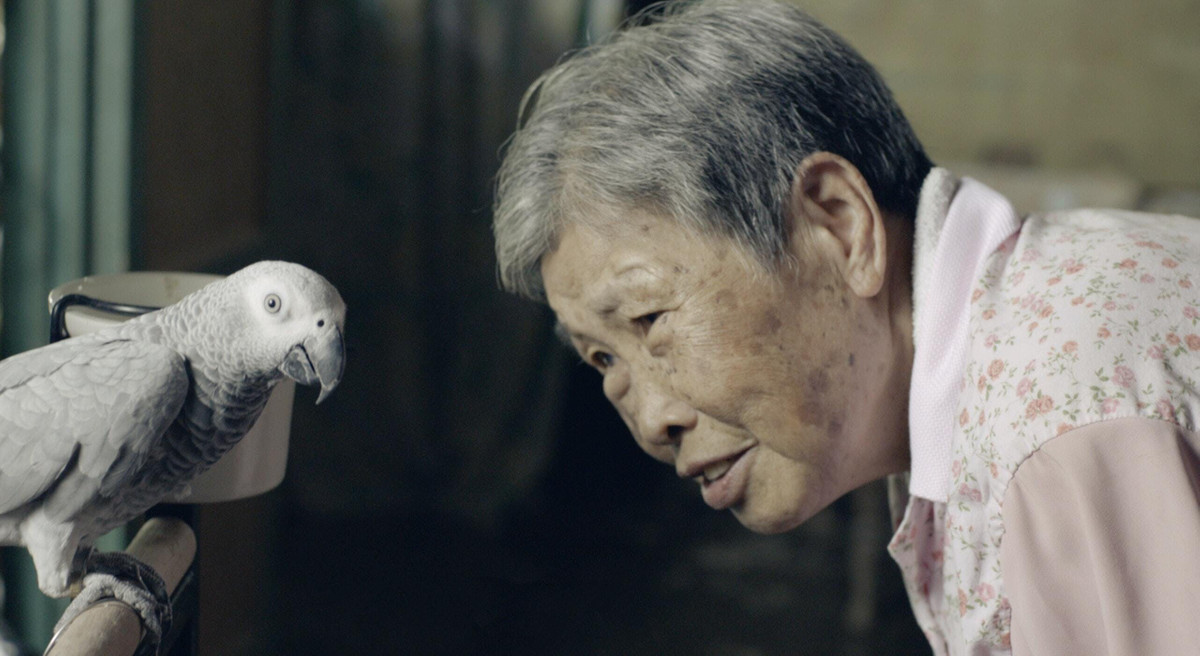Beneath the surface of our everyday social interactions exists a shared longing for closeness that ties us all together. Singaporean filmmaker Kirsten Tan demonstrates this shared humanity in Dahdi, a short film that crafts an unexpected intimacy between an elderly Singaporean woman and a Rohingya refugee she lets into her home. Inspired by a 2012 event in which 40 Rohingya refugees were rejected upon arrival to the port of Singapore, Dahdi begs the question: what would you do if a refugee showed up at your doorstep?
Dahdi, meaning “grandma” in Rohingya, thrives in the mundane routine of an elderly woman. Set and shot on the Singaporean island of Pulau Ubin, the film is incredibly stripped back, allowing the viewer to enter the reality of the everyday with new eyes and ears. Birds can be heard chirping in the background while the sound of shifting bodies are magnified. The organic quality of the grandmother’s home is one that can only be captured by shooting from truth. It is with that same commitment to portraying an unmediated reality that Tan casts Hwa Lee, an elderly woman from the local village who has never before acted professionally, to feature in the film. When the grandmother returns home from a day of running errands, we see a glimpse into her quiet life. The rhythm of her routine feels familiar, and she shifts from lighting incense to dinner in front of an old TV with the ease of someone who has done so everyday for a long time. Suddenly, her solitude is interrupted by a rustle in the supply room. There, she discovers a young Rohingya girl rifling for food, exhaustion etched into her timid face.
As is expected of her, the grandmother dials the authorities to report the refugee’s presence. Despite this, she feeds the girl, in typical grandmotherly fashion, and even tries to strike up a conversation about the whereabouts of her parents—but the girl remains silent, not understanding the grandmother’s words. Although expressionless, she’s cautious; she knows she doesn’t belong, that at any moment she might be kicked out; yet, in the familiar way she devours the rice, or the affection in her hands as she strokes the grandmother’s bird, we witness gestures that are unmistakably human, drawing both the audience and the grandmother closer to her as she wordlessly builds rapport.
With its handheld style, much of the story is conveyed through the camera’s lingering focus on the characters’ hands. At the sight of one of the grandmother’s frequent customers, a well-intentioned Malay man, the Rohingya girl keeps her hands behind her back, hiding them from sight—self-defensive. Even through the grandmother’s rushed pats and hurried words as she fusses with the girl’s scrappy appearance, her sunspot dusted hands are protective, gingerly taping the girl’s picture of her mom back together and brushing her hair out of her face. Despite their age, there’s deep care in those hands—who knows where they’ve been—while the girl clings to the photo of her mother, accepting the grandmother’s weathered but gentle touch. Everything feels so intimate, from the close-ups on the grandmother’s sunspots to the emphasis on the Rohingya girl’s tired eyes, and under the dim light of the stucco house and the quiet whirring of the plastic fan, a feeling of warmth is shared between the two that interrupts the grandmother’s solitary routine. Yet, at the same time, the distance between them underlies their hesitant exchange of trust, their language barrier and lack of knowledge about one another impossible to ignore.
When the Rohingya girl finally speaks, it feels like a relief. Her voice is a quiet croak, almost a whisper, and her words are the only words in the film that go un-subtitled. They are not understood, but that is hardly the point; her speaking is a liberation, shedding her protective walls to let the grandmother in. There is a palpable intimacy as she lays to sleep, in the comfortable silence between the two of them, in the loosening of the girl’s limbs, sinking into the grandmother’s rough but soothing touch. Dahdi captures a language that exists beyond words, between strangers nonetheless—a connection that relies on an unspoken trust threatening to break. Perhaps the language barrier is a hindrance to their closeness; after all, how are you to know that your experience is shared? As the tire sounds of the police car approach, each cling to the other’s companionship before it is ultimately shattered.
As the police drag the girl out of the grandmother’s home, the two share a heart-wrenching look. Whether of confusion, pleading, or regret, the choice has already been made: the grandmother made the call of legal responsibility long ago, and anything that happens afterwards is already too late. In the last shared, piercing glance, Dahdi asks us who we consider strangers, what barriers truly separate us, and the loss we risk once we begin to see them as one of our own.
At the end of the film, the grandmother returns to her empty home alone, indebted to a girl whose name she never learned. Although only a flicker in the grandmother’s otherwise mundane routine, the girl filled an ache that, until then, she had not even known had existed: a desire for a companion.

